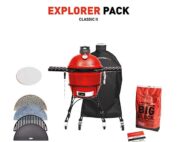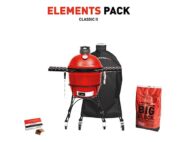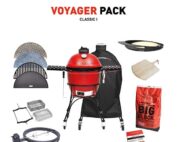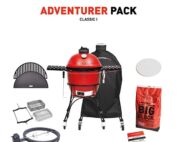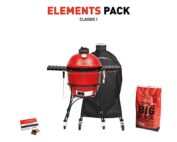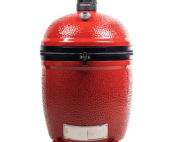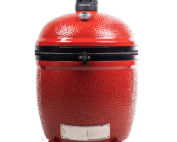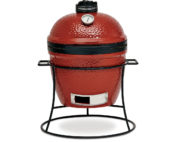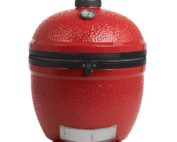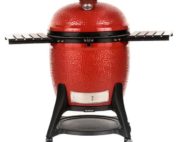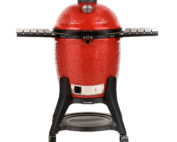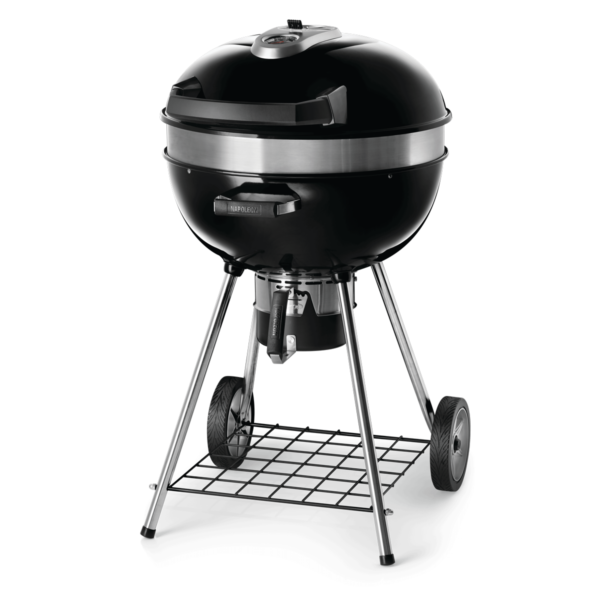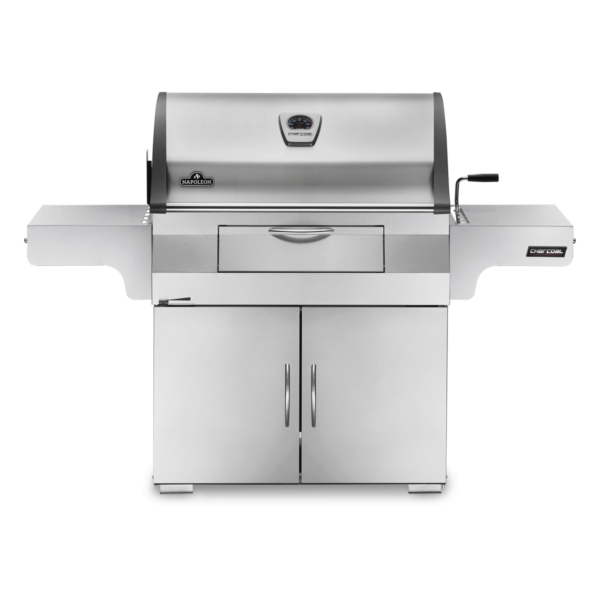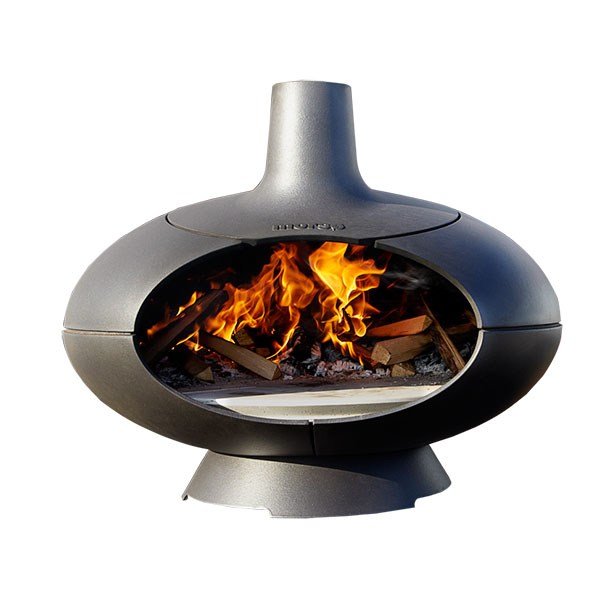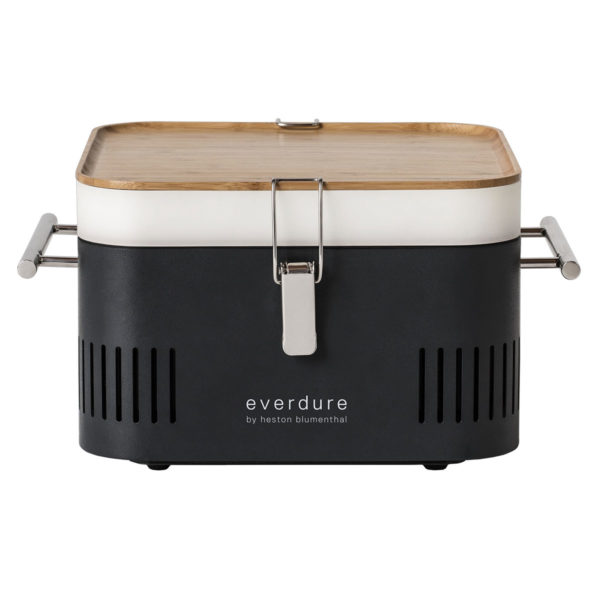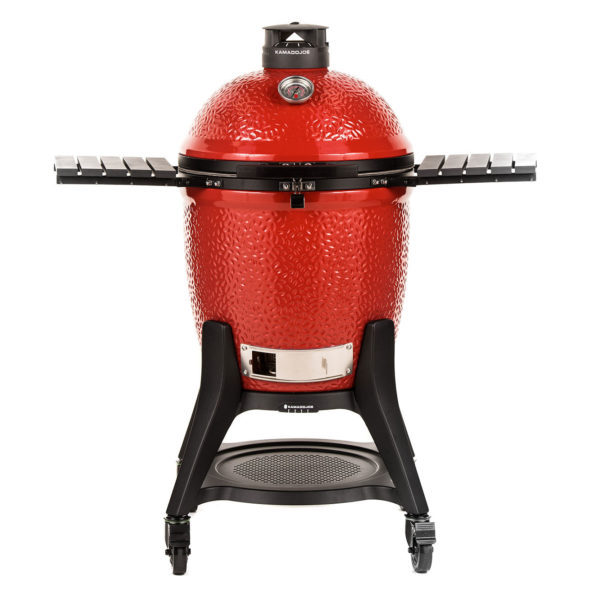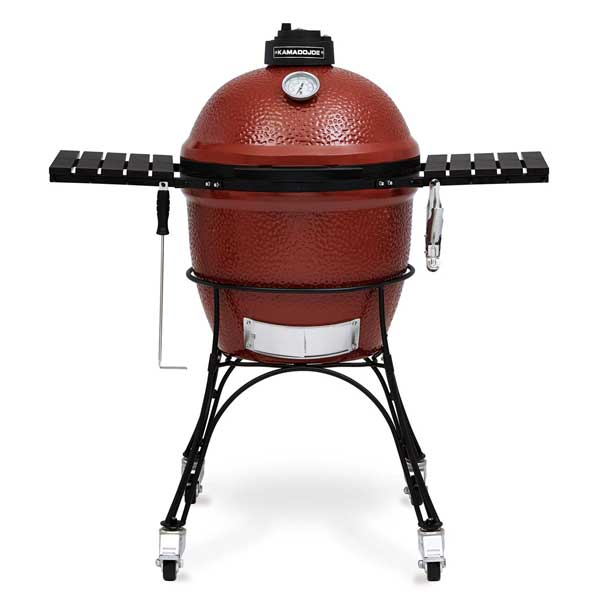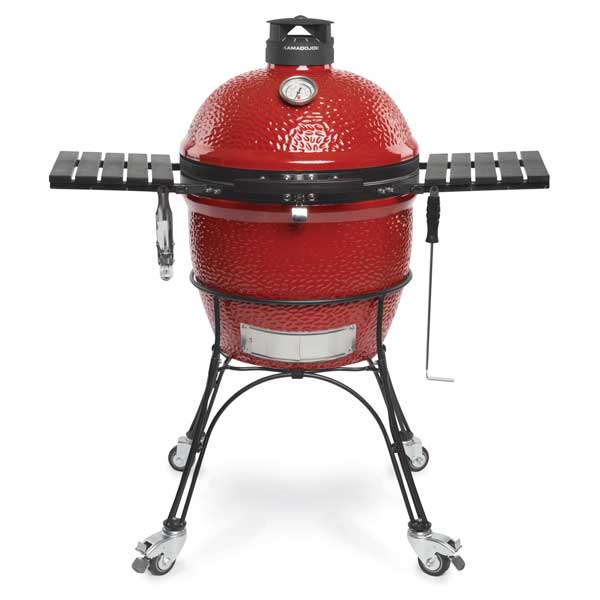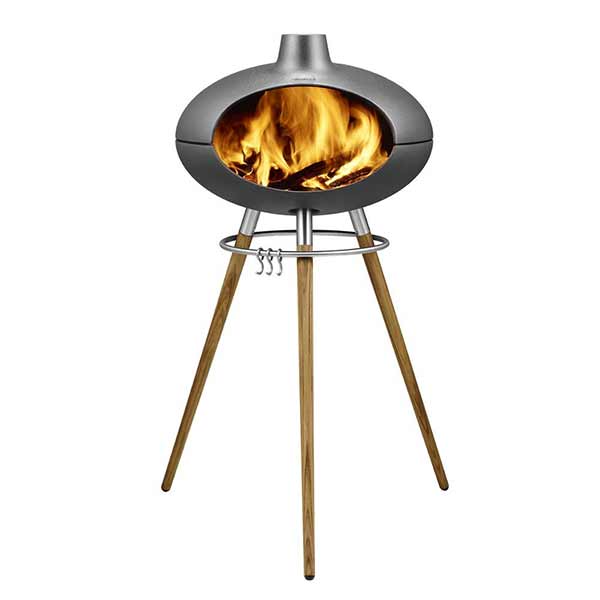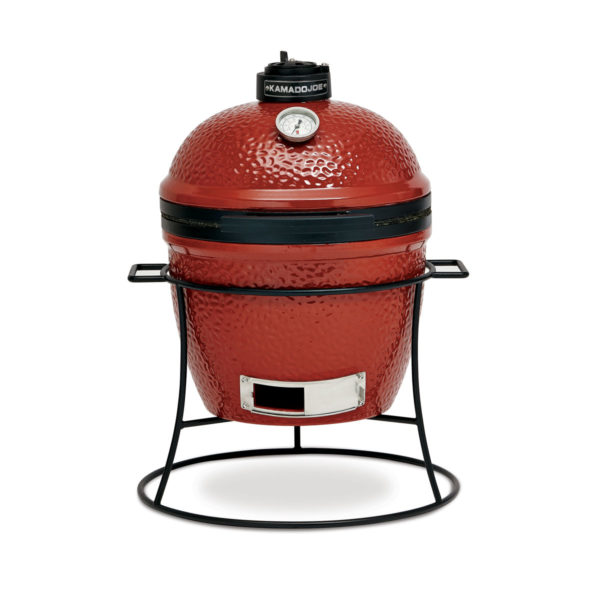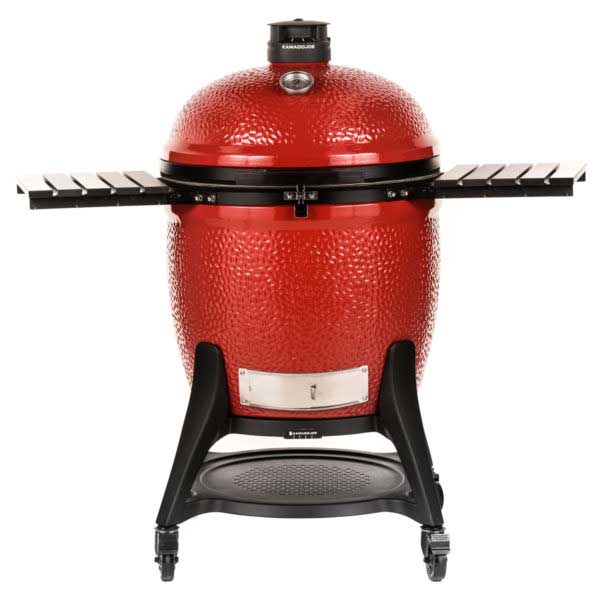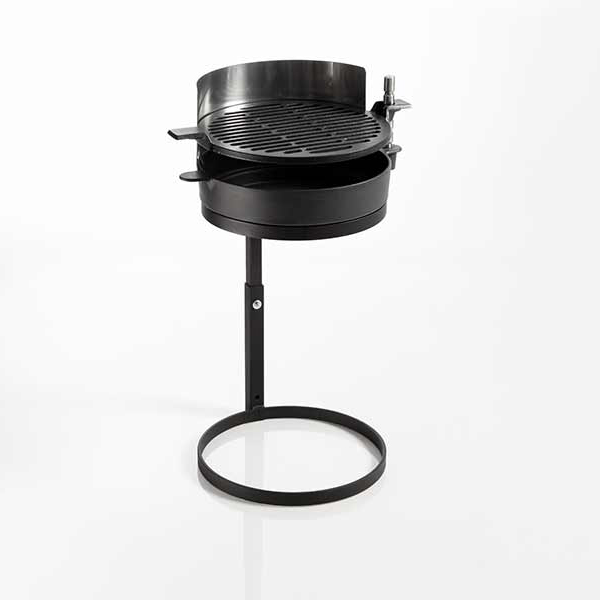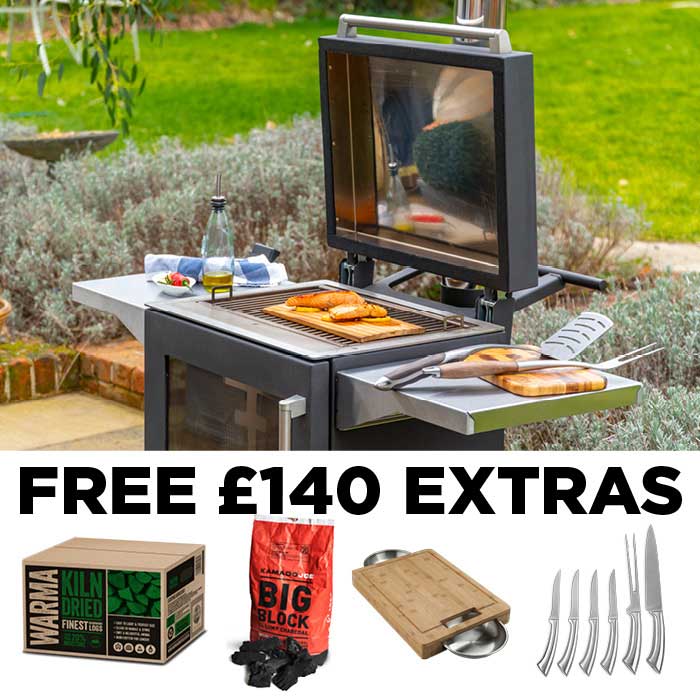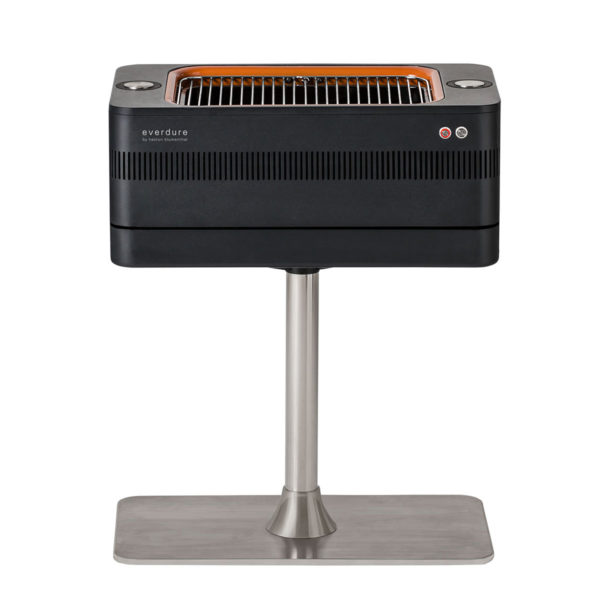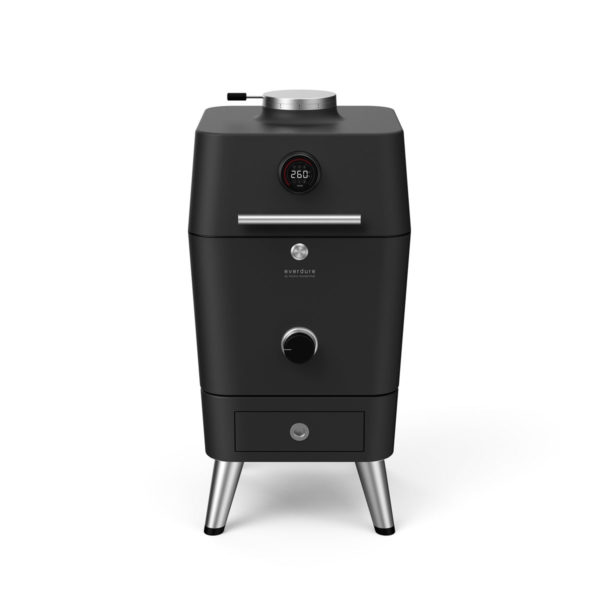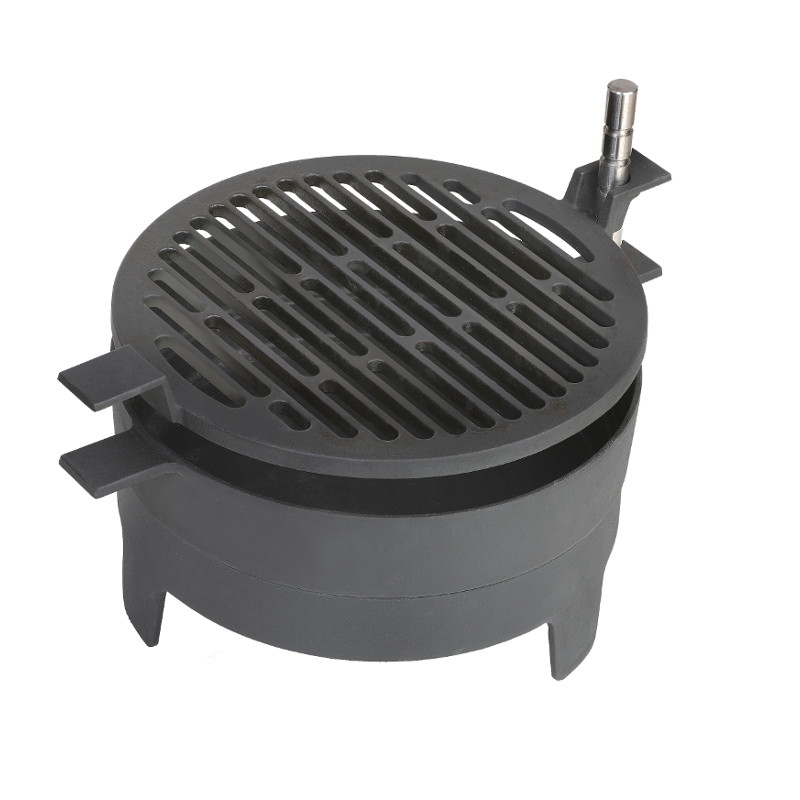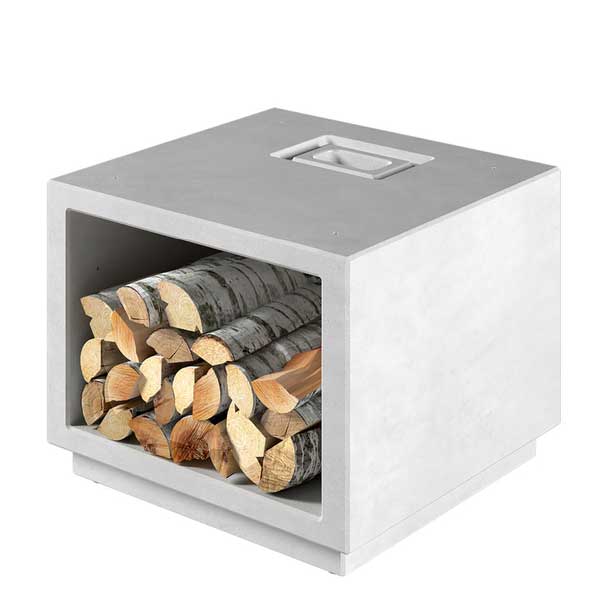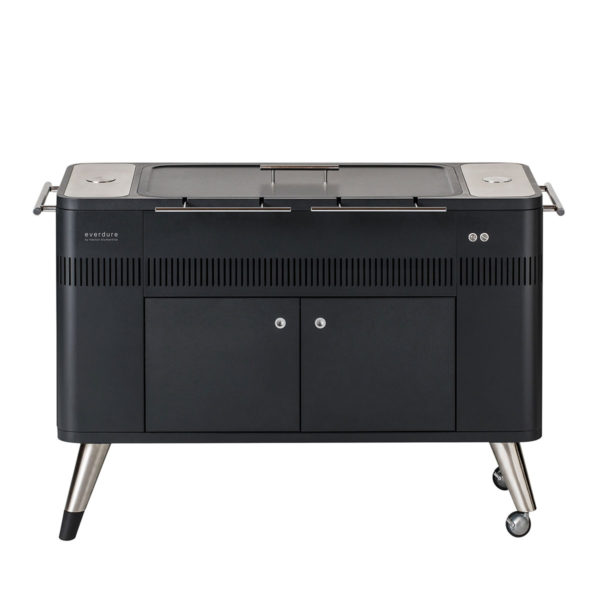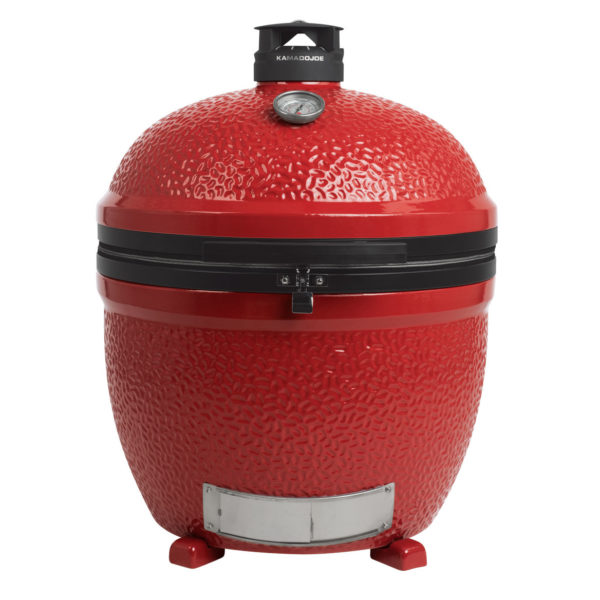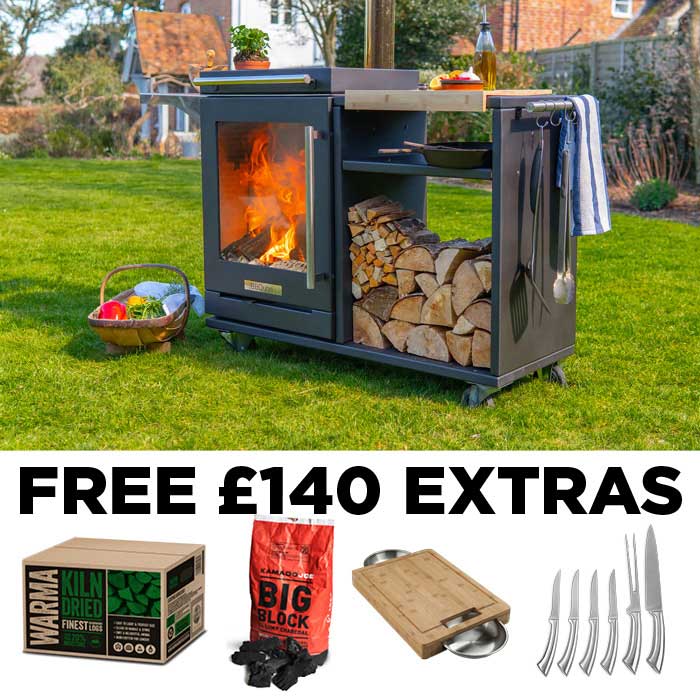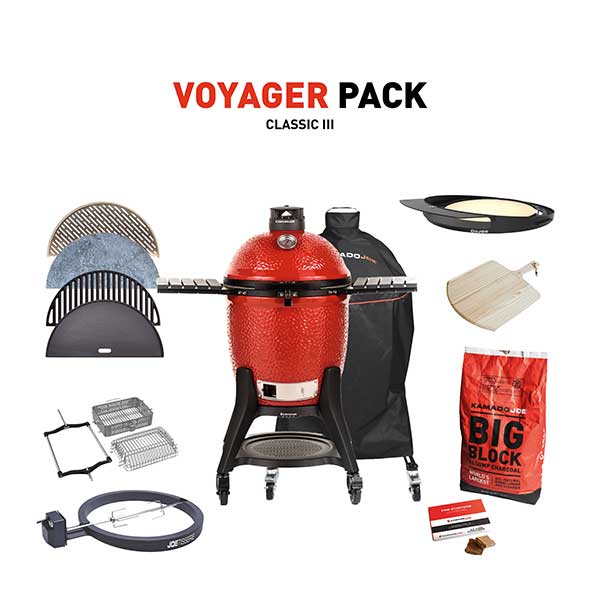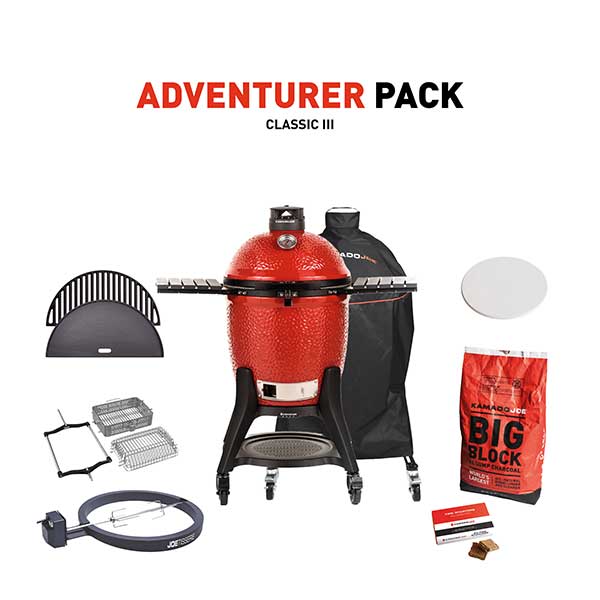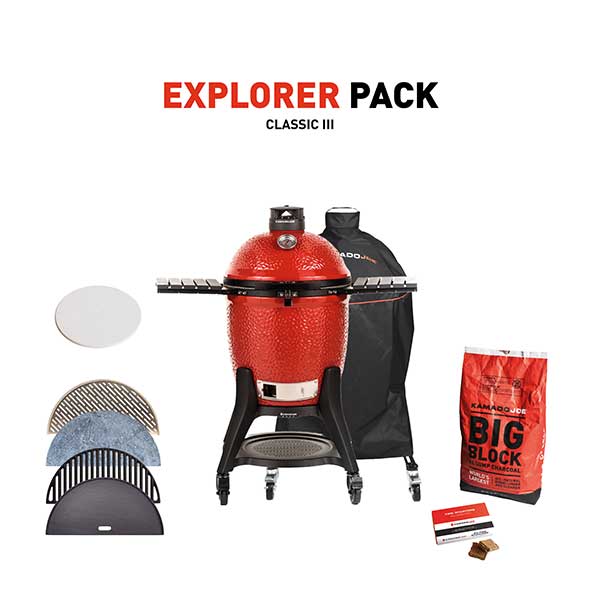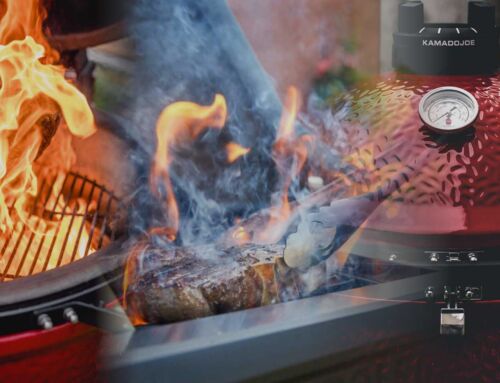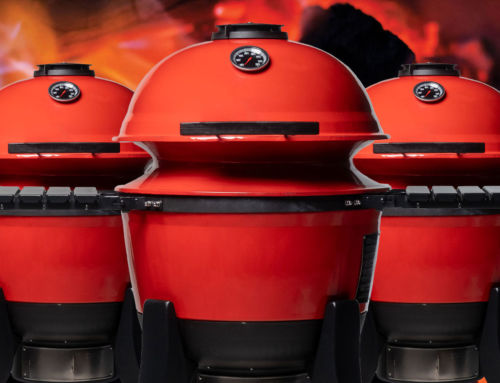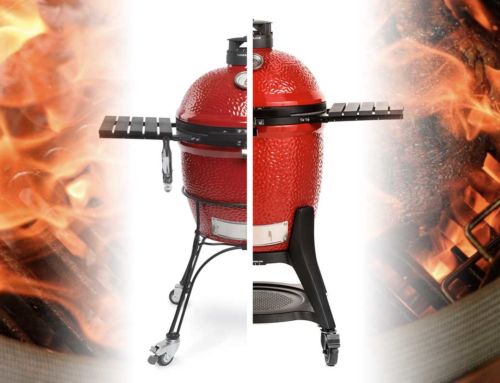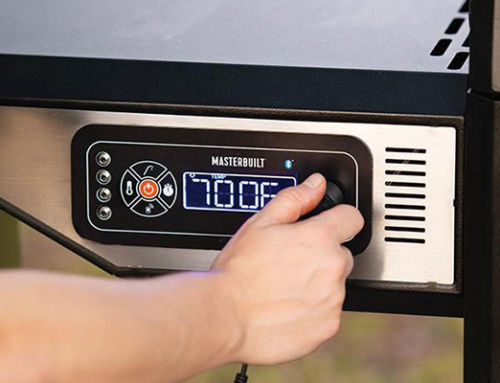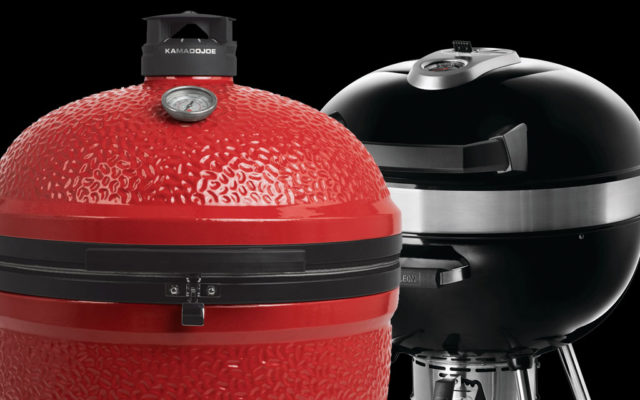
What is a Kamado?
Although Komado-style grills marginally compete with kettle-style grill and charcoal grills, they are vastly different and in a class of their own in terms of food quality, build-quality, durability, versatility and design.
Kamado style grills have been around for about 3000 years, originating in China and Japan, with similarities to the Indian Tandoor oven. They first became popular in the West after soldiers returned from WW2. Made entirely out of a high-quality ceramic egg-shaped shell, a modern Kamado Joe grill has amazing insulation properties and circulates and retains heat far better than a kettle-grill or conventional charcoal grill.
Kettle grills generally are shaped like spheres, with the top half forming the dome-shaped lid and made from steel; and conventional charcoal grills are generally open or with a barrel-type lid and usually made from steel or stainless steel retaining much less heat than a Kamado Joe. The food quality among the three can usually not be compared, unless in the hands of a master chef.
Kamado Joe grills are incredibly versatile and perform superbly as ovens, smokers, roasters, BBQ’s, pizza ovens and even as slow cookers because they can produce anything from red-hot cooking to a steady low heat maintained for hours. Kamado Joe grills employ both direct and indirect heat for cooking. Direct heat from the charcoal is perfect for steaks or other meat, while the heat which is spread evenly throughout the oven is perfect for baking and the heat radiating off the dome-shaped roof for perfect pizzas, paellas, tandoori cooking and roasts.
What are the benefits of a Kamado Joe?
By far the best feature of a Kamado Joe is the quality of cooking and the taste produced. Meat remains moist and juicy whether you prefer your steak rare or well done because the decreased lets very little moisture evaporate from the meat. The same can be said for the quality of bread, pizza, vegetables, or whatever else you cook in a Kamado Joe.
The Kamado Joe is probably the most versatile open-air kitchen on the market. The larger models have different heat zones for simultaneously preparing different dishes or cooking steaks according to the “doneness” grade of each of your guests. With its large variety of accessories, within seconds, you can turn your Kamado Joe into a smoker, a roasting oven, bread-baking oven, pizza oven, Dutch oven, tandoori oven, a griddle or plancha, a BBQ, a rotisserie, or a slow-oven, or if you want to, a firepit. Once you have the knack of obtaining the exact cooking temperature, up to 450 °C, you will be able to cook at any temperatures from cold-smoked food, to pizza that is soft inside with a crispy crust, to searing steaks.
A Kamado Joe is extremely energy-efficient, using a very small amount of charcoal to produce long-lasting heat. The exceptional insulation means they are easy to start in cold weather and will retain the heat inside for even cooking, no matter what the temperature outside.
If treated properly, a Kamado Joe will last a very-very long time and its attractive appearance will grace your garden or patio as a focal point.
Should you immediately throw out your kettle grill or charcoal grill and buy a Kamado Joe?
If you can afford the higher price tag, the answer is unequivocally yes. You will get more value for your money than you imagine.
However, if you are on a budget, the answer is probably no, because they cost a lot more than an economy charcoal grill or kettle-grill. Again, you are reminded that you get what you pay for.
If all you require is to cook a quick hamburger, hotdog or chicken breast, it will probably not be worth your while. If however, you are a grill fanatic, contact us today for your new Kamado Joe.
Things to watch out for if you buy a Kamado Joe.
Starting a fire and achieving the target cooking temperature in a Kamado Joe is quite different from a conventional charcoal or kettle grill, but it is quick and simple to master the technique.
If you overshoot the cooking temperature, it will take you quite a while to cool it down, because of the extraordinary heat retention. It is therefore best to plan your cooking routine in advance.
Direct Comparison between a Kamado grill and a Kettle Grill
- Kettle and charcoal grills are generally made of steel, while the Kamado Joe is made of ceramic, which will outlast the steel by many years. Steel cannot handle the high temperatures achieved in a ceramic Kamado Joe.
- Kamado and kettle grills have two dampers, one at the bottom and one at the top. The Kamado Joe dampers are airtight for far superior heat and airflow control.
- The Kamado Joe lid also has an airtight seal to keep in the heat and moisture in the food. Charcoal grills generally do not seal and much less heat is retained inside the cooking area.
- The Kamado Joe heats up like a furnace on the inside, while staying cool on the outside. Kettle and charcoal grills are usually very hot on the outside, posing a potential danger to children and frail persons.
- A Kamado Joe holds more charcoal than the same size kettle or charcoal grill, producing much greater heat. Temperatures of up to 450°C have been recorded in a Kamado Joe for the perfect searing of a steak, or high-heat plancha or heat-plate cooking, while you will have to settle for a lightly charred steak at best on a kettle or charcoal grill.
- Kettle grills and charcoal grills are not built to withstand high temperatures and will not last nearly as long.
- Maintaining even heat:
In charcoal grills it might be possible to attain high heat for a short period of time, but generally the cooking heat is around 120-130°C.
In a good quality kettle grill, temperatures of up to 290 °C can be maintained for short periods.
In a Kamado Joe temperatures of up to 450 °C can be sustained for long periods. - The Kamado Joe is extremely economical. It requires much less charcoal than either the charcoal or kettle grills for the same amount of heat and will retain an even heat for much, much longer.
- It is critical to grill food such as rib and brisket at a steady temperature as spikes easily dry out the meat. It is difficult to maintain a constant temperature on a charcoal grill. A top-quality kettle grill might be able to maintain a steady heat for up to 4 hours, requiring constant adjustment of the dampers, while a Kamado Joe can retain the same heat for up to 6 hours, at a much steadier temperature without any adjustment.
- Kettle grills and charcoal grills of the same size are much lighter and therefore generally more portable than a Kamado Joe, although smaller, portable models are available.
- Kettle grills are cheaper than Kamado grills and charcoal grills are generally even cheaper than kettle grills.









